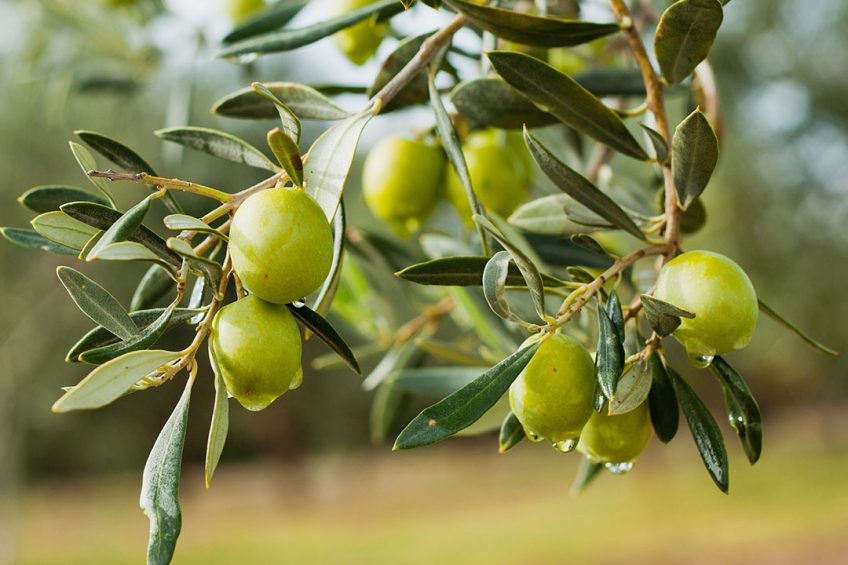Benefits of olive bioactives in gut health

For optimal animal performance and well-being it is essential to support intestinal health. Olive bioactives could be considered as an interesting tool to fight against gut disorders derived from stressful situations in poultry farming.
Olives and olive oil are an essential part of the Mediterranean diet and are associated with having many beneficial effects on health and especially for being a source of large amounts of valuable monounsaturated fatty acids, although a huge majority of described benefits are mainly attributed to the presence of other minor bioactive compounds, including flavonols, polyphenols (i.e. hydroxytyrosol), secoiridoids (i.e. oleuropein), tocopherols, and triterpenes (i.e. oleanolic acid, maslinic acid) among others. Biological activities related to them include antioxidant, anti-inflammatory, antimicrobial, anti-artherogenic and anti-tumour properties. The tremendous potential of these bioactive compounds has inevitably expanded the research around the generation of bioactive-rich olive extracts and the benefits of their use in different fields.
Challenges in broilers production
During the short but intensive production cycle of broiler chickens, animals are submitted to multiple challenges, which includes dietary changes, pathogen exposure and high density etc . The adaptation process to these stressful situations involves a subclinical inflammatory response which if it is not properly solved, can become chronic. This status of subclinical chronic inflammation affects gastrointestinal function and health (Figure 1), leading to a lowered nutrient absorption and the consequent energy expenditure derived from the immune system activation. Unpaired metabolism has a direct negative impact on animal performance, with the associated economical loses. Recently, these problems were hidden with the use of antibiotic growth promoters (AGP) but after their ban in 2006 they arose again, and there is still a needed to find cost -effective alternatives.
Figure 1 – Gastrointestinal function in healthy and damaged gut.

How to study gut health in poultry?
There are different biomarkers for monitoring intestinal health in poultry; each one is providing specific information and therefore, they are complementary. Several authors reviewed the most appropriate biomarkers to evaluate gut health in poultry, classifying them depending on the target of study: intestinal integrity (tight junction components, histology -villi length and crypt depth-, transepithelial electrical resistance- TEER), gut permeability markers (i.e. mannitol and lactulose, for transcellular and paracellular transport, respectively) and immune status (cytokines, acute phase proteins, etc.). Unfortunately, most of the current biomarkers require invasive sampling and specific laboratory analyses (ELISA, RT-qPCR, HPLC, etc.) limiting their use in the research field. Nevertheless, nowadays, different reports about the development of rapid and non-invasive techniques that could be applied directly on the farm have been published; with the most promising ones based on the detection of molecules ending up in the excreta and litter.
In summary, the analysis of several markers is mandatory when evaluating the efficacy of a feed additive focused on gut health, in order to deeply understand its mode of action, which is usually quite complex.
Figure 2A – Effect of experimental diets (CON-control, MON-monensin and OB-olive bioactives) on performance of broilers.

Use of olive bioactives in poultry
Several studies have evaluated the effects of standardised mixtures of olive bioactives in poultry, with special emphasis on gut health. Animals who received olive bioactives in their feeds showed positive results on performance versus the control group (broilers- Figure 2A and turkeys-Figure 2B), especially under challenging situations. Therefore, to better understand the mode of action of this family of products, several biomarkers (in vitro and in vivo) have been measured to have a wider vision of their biological effects into the animal, with especial focus on gut function and the inflammatory status of the animal.
Figure 2B – Effect of experimental diets (CON-control and OB-olive bioactives) on performance of turkeys.

Preliminary cell studies demonstrated the potential activity of these olive bioactives on reducing oxidative stress (augmented catalase and glutathione gene expressionin IPEC-J2 cells), reducing inflammation (prevented IL-1β and iNOS gene overexpression in Raw 264.7 cells) and improving gut integrity (improved TEER and upregulated tight junctions gene expression in IPEC-J2 cells). In these trials, cells were immune challenged with LPS and data showed prevention of negative consequences derived from the LPS challenge after pre-incubation with olive bioactives.
To explore the mode of action of a specific formulation based on olive bioactives in broiler chicken diets and their potential benefits, Lucta and its collaborators performed different in vivo trials. In a first trial, birds supplemented with olive bioactives improved animal growth as a result of its immunomodulatory effect at the gut level. Additionally, these results were not different from those obtained with the positive control with monensin (Figure 3).
Figure 3 – Effect of experimental diets (MON-monensin and OB-olive bioactives) on the expression of selected genes in the ileum.
The same olive bioactives formulation was evaluated again in an in vivo intestinal inflammatory model based on feed restriction. After a short feed restriction period, broiler chickens displayed a loss of intestinal integrity, as evidenced by a decrease in the gene expression of Claudin-1, a lower villus length/crypt depth ratio, and a higher serum lactulose/mannitol ratio. In addition, the challenge increased intestinal inflammation as suggested by the upregulation of the gene expression of pro-inflammatory cytokine IL-8 and the Toll-Like Receptor 4 in the ileum. The supplementation of olive bioactives in the diet was able to prevent some of these negative effects, resulting in a better intestinal functionality (higher serum mannitol concentration and lower duodenal crypth depth), a modulation of the immune system (higher gene expression of the B-cell marker Bu-1) and an attenuated local inflammation (decreased gene expression of IL-8).
Promising tool
The use of specific formulations of olive bioactive compounds in broiler chicken diets may be considered as a promising tool to deal with challenging situations associated to our poultry production systems thanks to boost antioxidant, anti-inflammatory and immunomodulatory activities in broilers to stabilise their physiological condition and support animal welfare.
Authors:
Marta Blanch, Gemma Tedó, and Jose J. Pastor, Innovation Division Lucta S.A







